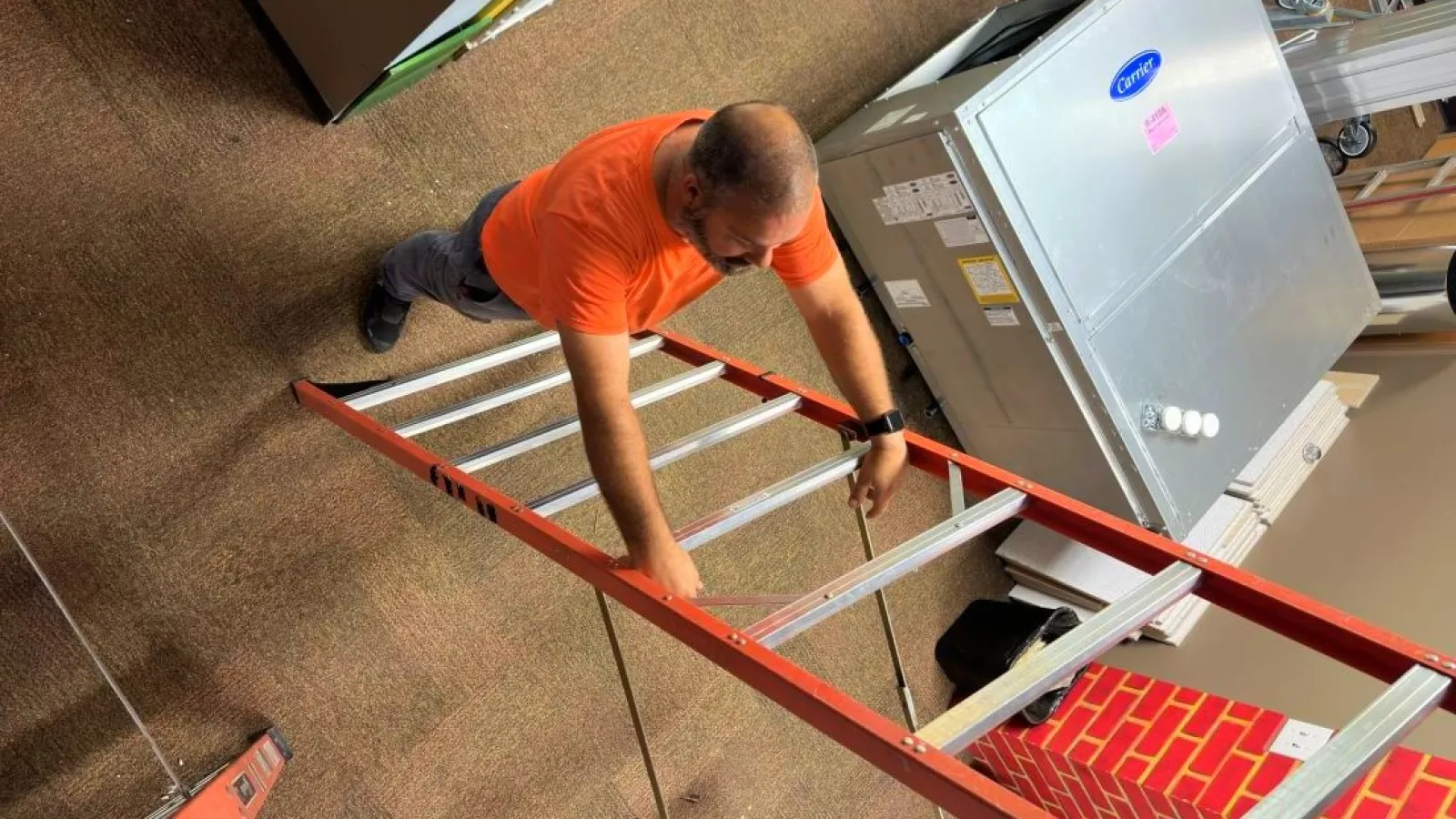Sick building syndrome is a real and present risk in many Atlanta area offices. Thought to be a result of poor air quality within a commercial building, sick building syndrome creates physical symptoms that lead to employee absenteeism and lost productivity.
Offices can reduce the risks of sick building syndrome and promote a healthy atmosphere by taking preventive measures to improve indoor air quality. Estes Commercial’s knowledgeable HVAC professionals discuss strategies that help your office combat this issue.
Causes of Sick Building Syndrome
Sick building syndrome is a term used to describe the acute health effects and comfort issues individuals experience upon spending time within a building, without a specific identified cause or illness. The issue can be widespread, affecting people throughout the facility, or localized to a particular area within the facility.
Factors that increase the risk of sick building syndrome within an office are related to indoor air quality, such as:
- Poor building design
- Inadequate ventilation
- Inconsistent facility use
- Occupant activities
- High concentrations of allergens
- Poor humidity control
Symptoms to Watch for
While symptoms of sick building syndrome typically subside once the person leaves the facility, the physical symptoms that manifest include:
- Headaches
- Coughing
- Eye, nose and/or throat irritation
- Itchy and/or dry skin
- Fatigue
- Dizziness
- Difficulty concentrating
- Nausea
Solutions to Prevent Sick Building Syndrome
Solutions to eliminate sickness in offices target the facility’s particular indoor air quality deficiencies through the use of Atlanta commercial HVAC equipment.
Improved Ventilation
Improper design of building ventilation systems allows chemical contaminants to enter via fresh air intakes in poorly chosen locations. This results in pollutants such as plumbing gases as well as building and vehicle exhaust contaminating the indoor air supply. Poor ventilation system design fails to remove contaminants that originate from within the facility, such as adhesives, cleaning agents, carpeting, pesticides and other materials that let off volatile organic compounds (VOCs) into the building’s air supply.
Offices can eliminate volatile organic compounds and sick building syndrome risks through the increase of ventilation rates, which reduces the volume of pollutants within indoor air. Ventilation systems need to meet the specifications required by local building codes. When strong sources of pollutants exist within the facility, remove pollutants by venting air to the outdoors. Studies of green certified buildings show that improved ventilation resulted in 30 percent fewer sick building syndrome symptoms amongst occupants, compared to non-certified facilities.
Relative Humidity Control
When relative humidity levels within an office are too high, airborne contaminants and allergens build up in higher concentrations indoors. Exposure to allergens in the workplace can cause physical symptoms along the lines of those associated with sick building syndrome. When air inside an office is too humid, germs, bacteria and viruses also thrive, contributing to illness and its spread amongst employees.
Relative humidity levels inside an office need to be kept balanced through the use of a whole-building dehumidification system. The dehumidifier works with the commercial HVAC system to remove excess moisture from the indoor air supply as it circulates through the building. When relative humidity levels are kept balanced between 30 and 50 percent, allergen and contaminant exposure is minimized.
Addressing Pollutant Sources
When an indoor air quality issue is known, it’s possible to directly address it by removing sources of contaminants or modifying them within the facility. Commercial HVAC systems require routine maintenance to preserve performance and airflow management. Commercial air cleaners can be used in conjunction with commercial HVAC systems to remove a significant portion of contaminants, though the filter must be appropriately selected to address the building’s specific pollution issue.
Other strategies include making adjustments to the way pollutants are used within the office to eliminate sick building syndrome symptoms. Products like pesticides, solvents, adhesives and other strong chemicals should be used during low- or no-occupancy times and properly stored in sealed containers placed in areas with good ventilation.
Improve Workplace Health with Help from Estes
Reduce the risks of sick building syndrome for your workers with indoor air quality solutions from Estes Commercial. By improving indoor air quality within your facility, keep employees and visitors healthy and happy, with less absenteeism and fewer productivity losses. Call Estes Commercial today to discuss solutions for your Atlanta office.


